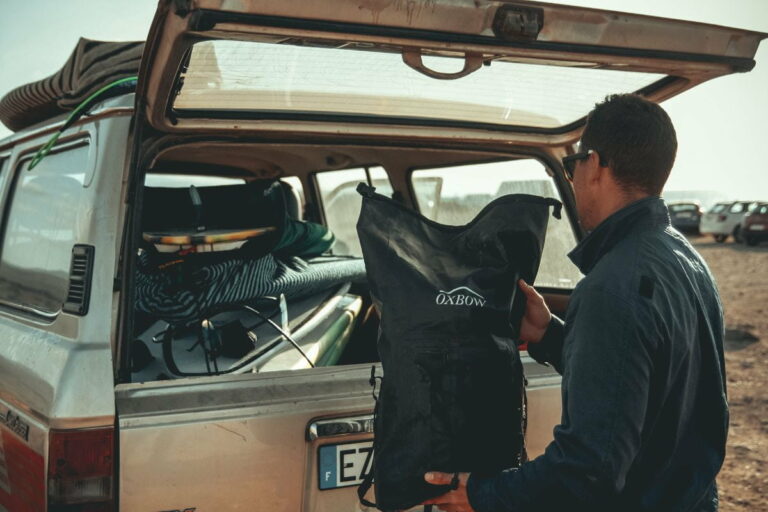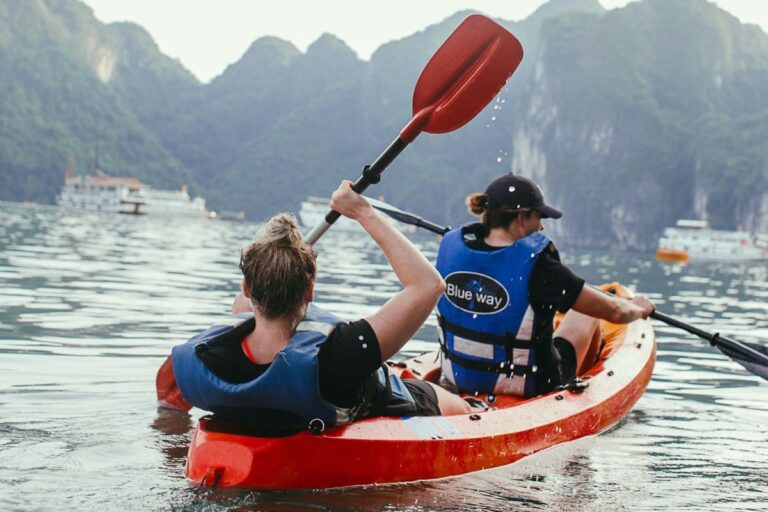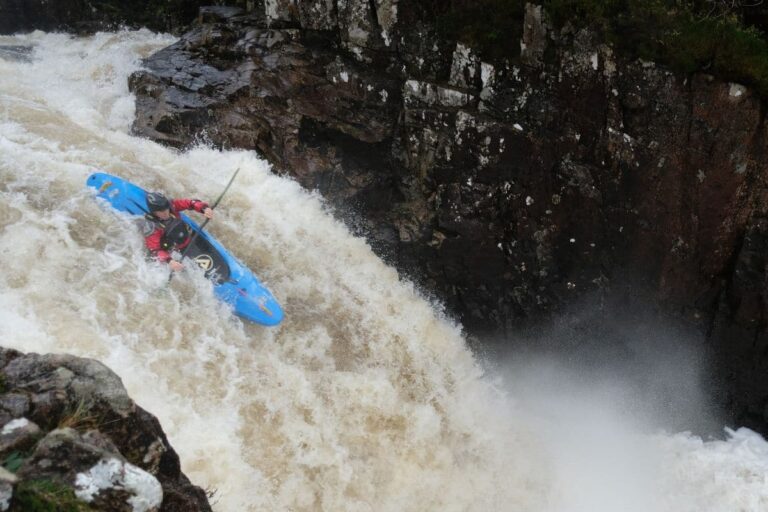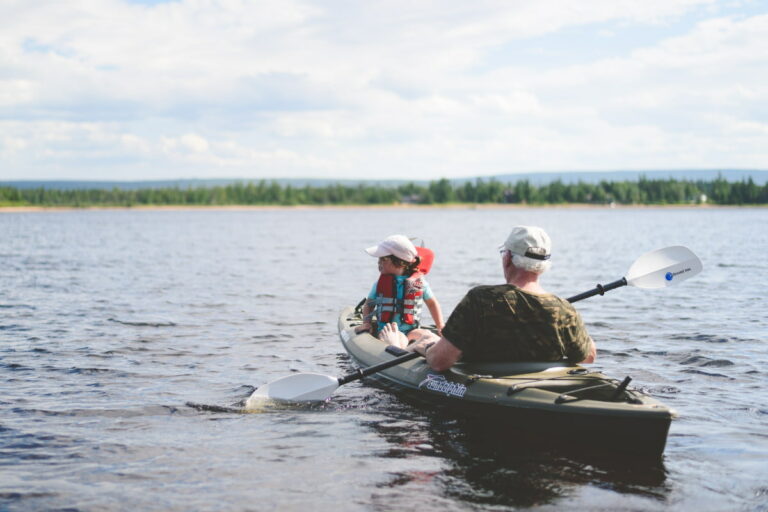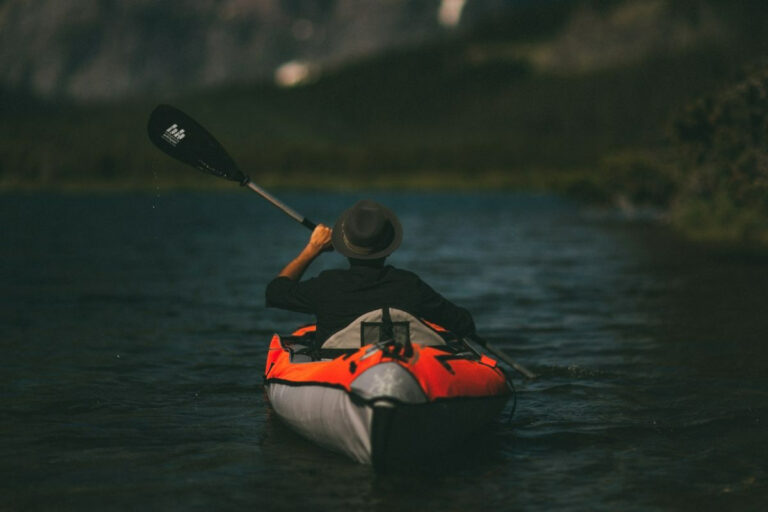How To Get Back On Your Kayak? (Important Safety Precautions)
If you’ve been kayaking for a while and you’ve never fallen off your boat, then you are in the minority!
Falling off your kayak is common and perfectly normal from time to time.
If you’re a beginner, you may not have experienced being flipped off your kayak yet, which means that this tutorial is especially important for you.
The most important thing is being prepared when (not if) the time comes.
Before we proceed, keep in mind that falling off a kayak is not that big a deal, whether you’re paddling in calm waters or fishing from a sea kayak in stormy weather.
It’s likely you probably won’t be kayaking in stormy conditions, unless you have adequate experience navigating in rough waters and unpredictable weather.
But if you lack experience, this isn’t something to panic about, since panicking is your worst enemy in this type of situation.
If you fall off your kayak, the most important thing to do is stay calm and follow the proper self-rescue steps. Depending on the type of kayak you use, you’ll want to make sure you follow the outlined steps below to ensure your safety in the event of falling off.
In order to understand how to get back inside your kayak after a flip, first you need to be familiar with the different types of kayaks, and how to self-rescue depending on your kayak model.
Types of Kayaks
Though similar in a broad manner, the techniques used to re-enter your kayak will depend on the type of kayak you use.
There are two types of kayaks: sit-on kayaks and sit-in kayaks.
Just as their names sound, a sit-on kayak requires you to sit on top of the hull, while a sit-in kayak is enclosed, requiring you to sit inside it.
Both of the above kayaks are available in both single and double models.
Sit-On-Top Kayaks
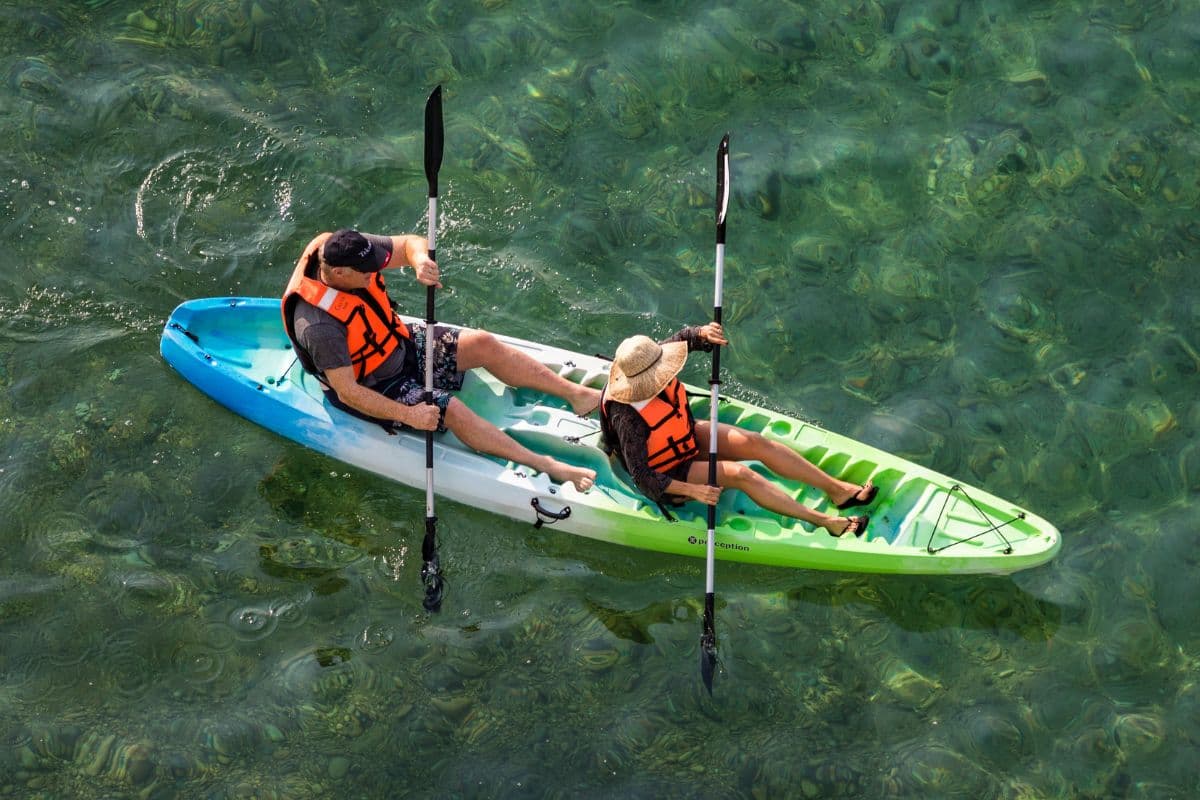
A sit-on-top kayak is the most beginner-friendly type of kayak.
Because it’s not enclosed, the lack of confinement gives beginners a better sense of control, since it’s quite easy to re-enter this type of boat.
Most kayaks designed for recreational use have a flat hull, which provides better stability and also means that you may be less likely to flip.
A sit-on-top kayak also has scupper holes on the surface that allow water to flow out.
This means that even if the kayak flips and you manage to get back on it, you won’t have to manually drain water off your boat.
Because the open nature of a sit-on-top kayak is, you’re more prone to get wet when paddling in deep water.
If you’re an avid kayaker, you know that deep-water swimming is an essential skill to have.
A sit-on-top kayak is characterized by a wide beam that provides increased balance.
However, because your sitting position is higher on this type of boat than with a sit-inside kayak, your center of gravity is raised, which makes it easier for you to topple off the boat into the water.
It also doesn’t help that the kayak doesn’t have braces to help you secure your position, as opposed to a sit-inside kayak.
This is why these types of boats are really only meant for beginners who are paddling in a calm lake or river that’s not prone to sudden weather or current changes.
It’s not too hard to get back on a sit-on-top kayak if you flip, but it’s also easy to fall off again.
Sit-Inside Kayaks
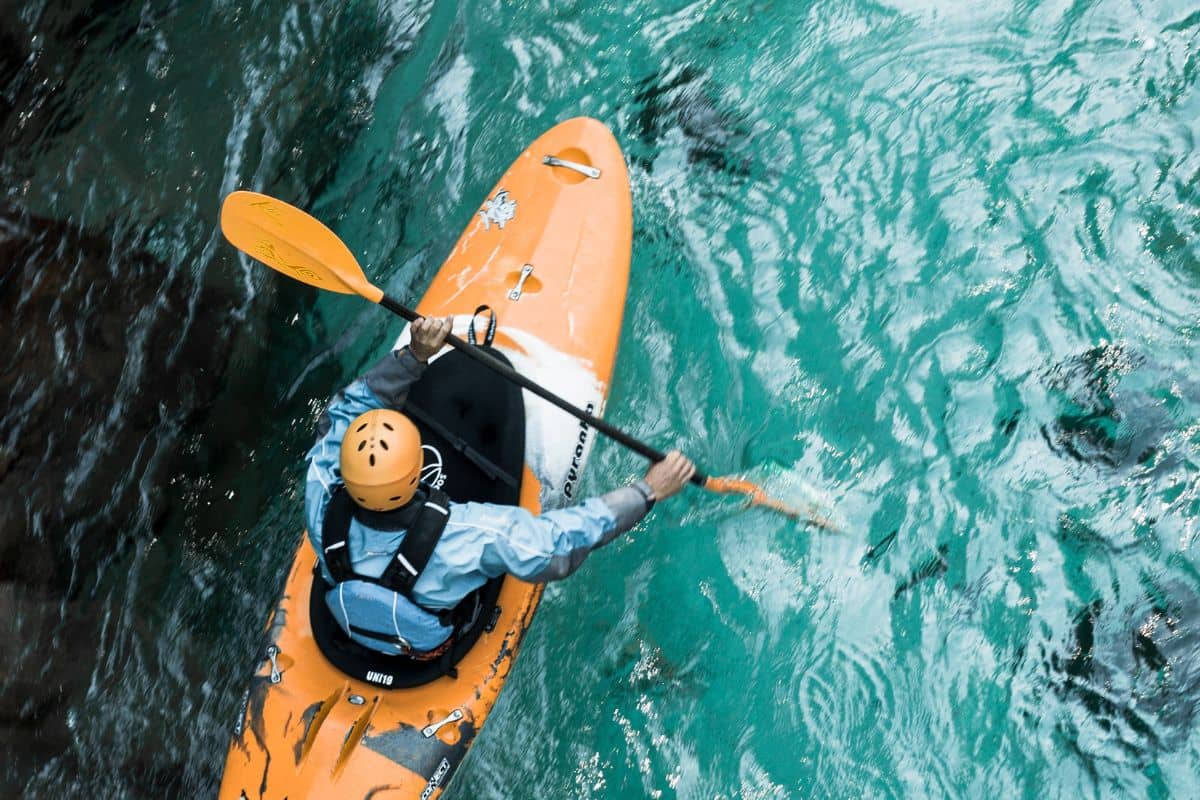
After experiencing a sit-on kayak, you may move on to a sit-inside kayak.
This type of boat is a bit more complicated when it comes to performing a self-rescue if you’re a beginner.
However, intermediate and expert kayak anglers usually appreciate the level of control that comes with this type of kayak.
A sit-in kayak also keeps your center of gravity low, which helps ensure more stability.
These boats keep you more securely positioned inside the hull, where you’ll have access to a seat and adjustable foot supports.
Keep in mind that with a sit-in kayak, you’ll probably want to put a spray skirt (which is a pliable waterproof cover) over the cockpit.
A spray skirt prevents excess water from entering the vessel.
The spray skirt is also one of the features that make this kayak seem more complex – if you’re not used to it, it will take a long time before you get the hang of getting yourself in or out of the spray skirt, especially in deep water.
This is also why the process of getting back into the kayak seat when the boat is completely flipped is a bit complicated, even though this type of kayak has braces to help you control your kayak.
A sit-inside kayak also fills up with water when you fall off, so you’ll need to remove the water after getting back inside.
This type of kayak is more appropriate for paddling in colder waters, or those prone to unexpected changes in weather.
It’s not as easy to fall off a sit-in kayak, but when you do, make sure you know how to get back into your kayak.
This is why it’s a good idea to practice often.
Safety Precautions – How To Get Back In Your Kayak
At some point, a capsized kayak is inevitable.
Because of this, it’s best that you have the right equipment to help ensure your safety.
Wear A Personal Flotation Device (PFD)
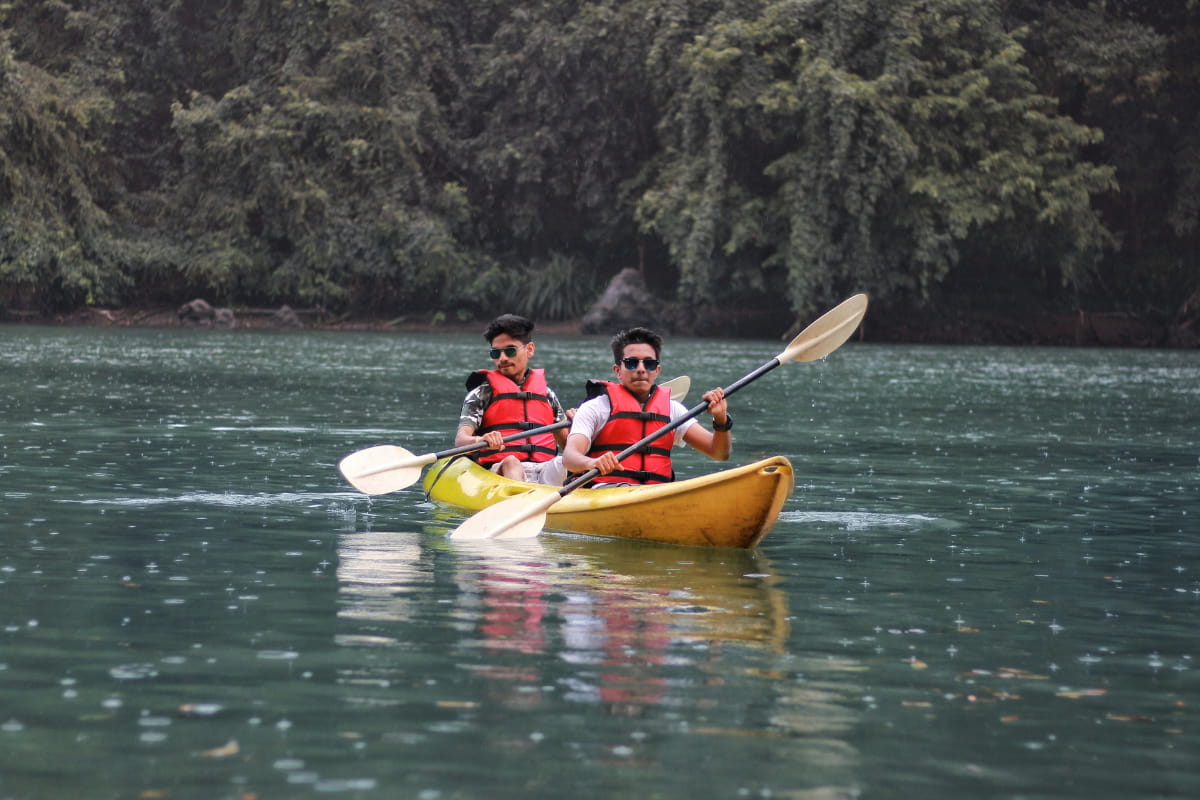
This is very important – don’t ever go kayaking (especially sea kayaking) without wearing a life jacket or PFD.
Yes, you may not feel as cool-looking as you’d like, but hey, it’s kayaking.
A life jacket works by providing buoyancy in case your kayak flips and you’re stuck in the water.
Although you’ll need to swim your way back to your kayak, you won’t need to worry about staying above the water.
A PFD is also (literally) a lifesaver if your swimming skills need sharpening.
Even for experienced swimmers, if the weather changes and you find yourself in stormy, choppy conditions, you’ll be grateful to have a life jacket on.
Use Kayak Bulkheads
Kayak bulkheads are important when you’re paddling in a sit-in kayak.
Bulkheads are airtight, watertight internal walls that help to maintain a dry, water-free environment inside the kayak.
They’re intended to reduce how hard you’ll have to work to clear water out from your boat.
Due to the slow accumulation of water, a kayak is able to maintain some level of buoyancy even with some water inside.
The fact that you won’t have to clear as much water (for the most part) helps save precious time while you’re trying to get back in your kayak.
Keep A Paddle Float
A paddle float is an inflatable cushion-like material that also helps to add some extra stability when you topple, or are about to topple off your kayak.
This device is especially recommended for beginners.
If you’re an experienced kayaker, a PFD/life vest serves a similar function.
Getting Back On A Sit-On Kayak
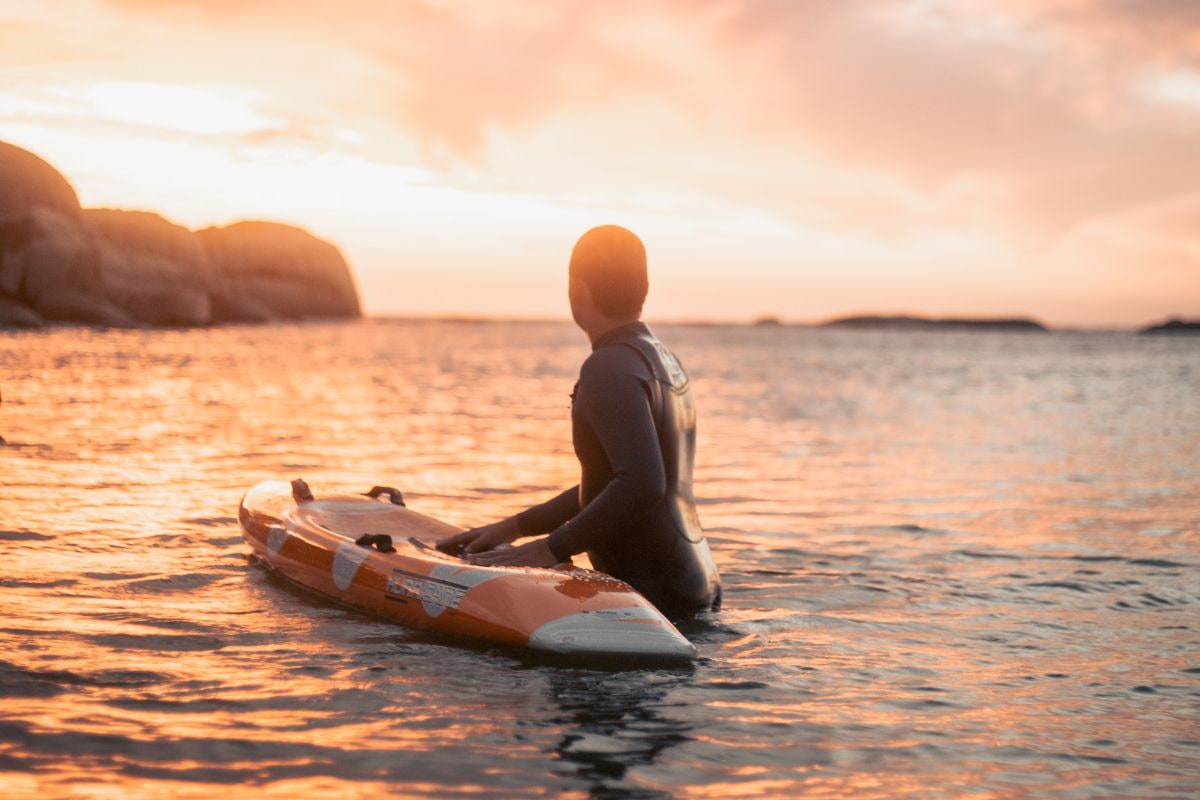
With a sit-on boat, you’re likely to make a “wet exit” off the side of the kayak.
When you do, be sure to grab hold of your paddle so it doesn’t float away.
Try to pull your paddle close to you and keep it by your side, or secure the paddle onto the kayak while you’re floating in the water.
In order to right the kayak, some experienced kayakers use an “Eskimo roll”, but that’s a more complex move for beginners (and is also more suited to a sit-in kayak).
If you’re some distance away from your kayak, swim to it.
The combination of your paddle and the PFD will help add buoyancy to keep you afloat throughout this process.
Once you’re closer to your boat, flip it upright so you can get back onto your kayak.
To do this, push forward with the top part of your body onto the hull of the flipped kayak.
Next, reach underneath, grab hold of the edge, and pull it towards you.
To make this action more effective, exert more weight on one arm and at the center of the flipped kayak (close to where your seat is positioned.)
If this is done properly, the kayak will start moving into position on its own.
Once you flip your kayak upright, the next step is getting yourself onto the boat and into your seat.
Position one hand (or both) on the opposite side of the kayak, and let your legs float to the surface of the water. Don’t force it, just let the water lift you up.
Once you’re level with the kayak, lunge forward onto it.
Your upper body should be the only part of your body on the kayak—keep your legs floating (a good measure is to make sure you don’t go past your belly button).
Do this in such a way that you’re exerting gravity onto the center of the kayak, ensuring stability.
If you feel like you’re stable enough, roll onto your back, lift your legs off the water and swing your whole body onto the kayak and into the seat.
Once the kayak is in the correct position, you’ll be ready to start paddling again and enjoy your open-water adventure.
Getting Back On A Sit-Inside Kayak
When a sit-in kayak flips, it will fill up with water easily.
Additionally, a spray skirt makes repositioning yourself back in the kayak seat even more difficult.
Experienced anglers might cut off the spray skirt or use an Eskimo roll, but making a wet exit is a simpler method if you’re a beginner.
It’s also important to remain patient and calm – it may seem like a big deal at first, but remind yourself that falling off a kayak is not that big a deal.
Just like if you fall off a sit-on-top kayak, you’ll also want to pull your paddle close to you so you don’t lose it.
You can secure your paddle onto your kayak, or just let it float right beside you, as long as you keep an eye on it.
Grab hold of the edge of your kayak’s hull, and maintain a good grip.
Do this on the side of the kayak closest to the cockpit so that you’re at the center of your kayak.
Position one hand onto the side of the kayak that’s next to you, and one hand on the other side, making sure to grab onto the sides very firmly.
Lean your body weight onto the kayak, and push it so that it will flip over to the upright position.
Midway through the flip, the momentum will make your kayak almost take over the movement and finish turning over.
Similar to when you re-enter a sit-on kayak, you’ll grab the opposite side of your hull and let the water float your legs and knees up.
Keep your legs closer to the surface and then push your abdomen onto the kayak.
From here, you need to be quick with your movement.
Turn your body and re-enter into the spray skirt.
Swing one leg inside the cockpit opening, and follow with the other.
You’ll feel a pool of water at your feet – you could drain some of it out using a bilge pump, but the best option for beginners is to paddle to shore and drain the kayak once you get there.
If your kayak has flipped, don’t let it ruin your day – flips are inevitable from time to time.
As long as you follow the steps above, you’ll be able to get back on, and keep kayaking.
Conclusion
As with any sport, it takes some trial and error in order to practice and improve.
Just like falling off during paddle boarding, a flip off a kayak is something that is likely to happen every now and then.
Although prevention is ideal, it’s crucial to learn how to get back into a kayak after a flip.
Review this tutorial frequently to make sure you’re aware of the steps you need to take before heading out onto the water.
Table of Contents

